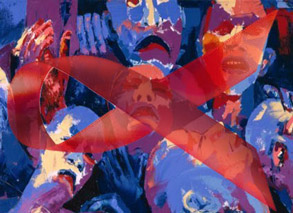 Jul. 21, 2025
Jul. 21, 2025
Weather
Cambodia
2009-08-24 16:08 BJTSpecial Report: Asia Pacific |
Culture and society
Various factors contribute to Cambodian culture including Theravada Buddhism, French Colonialism, Hinduism, Angkor era culture, and modern globalization. The Cambodian Ministry of Culture and Fine Arts is responsible for promoting and developing Cambodian culture.
Cambodian culture not only includes the culture of the lowland ethnic majority, the Khmer, but of also some 20 culturally distinct hill tribes colloquially known as the Khmer Loeu, a term coined by Norodom Sihanouk to generate unity between the highlanders and lowlanders.
Rural Cambodians wear a krama scarf which is a unique aspect of Cambodian clothing. Khmer culture, as developed and spread by the Khmer empire, has distinctive styles of dance, architecture and sculpture, which have been exchanged with neighbouring Laos and Thailand through the history.
Angkor Wat (Angkor means "city" and Wat "temple") is the best preserved example of Khmer architecture from the Angkorian era and hundreds of other temples have been discovered in and around the region.
Traditionally, the Khmer people have a unique method of recording information on Tra leaf. Tra leaf books record information on legends of the Khmer people, the Ramayana, the origin of Buddhism and other prayer book series. They are greatly taken care of and wrapped in cloth as to protect from moisture and the jungle climate.
Bonn Om Teuk (Festival of Boat Racing), the annual boat rowing contest, is the most attended Cambodian national festival. Held at the end of the rainy season when the Mekong river begins to sink back to its normal levels allowing the Tonle Sap River to reverse flow, approximately 10% of Cambodia's population attends this event each year to play games, give thanks to the moon, watch fireworks, and attend the boat race in a carnival-type atmosphere.
Popular games include cockfighting, soccer, and kicking a sey, which is similar to a footbag. Based on Theravada Buddhism, the Cambodian New Year is a major holiday that takes place in April. Recent artistic figures include singers Sinn Sisamouth and Ros Sereysothea (and later Meng Keo Pichenda), who introduced new musical styles to the country.
Rice, as in other Southeast Asian countries, is the staple grain, while fish from the Mekong and Tonle Sap also form an important part of the diet. The Cambodian per capita supply of fish and fish products for food and trade in 2000 was 20 kilograms of fish per year or 2 ounces per day per person.
 Mail
Mail Share
Share Print
Print


 Video
Video









 2009 China Central Television. All Rights Reserved
2009 China Central Television. All Rights Reserved